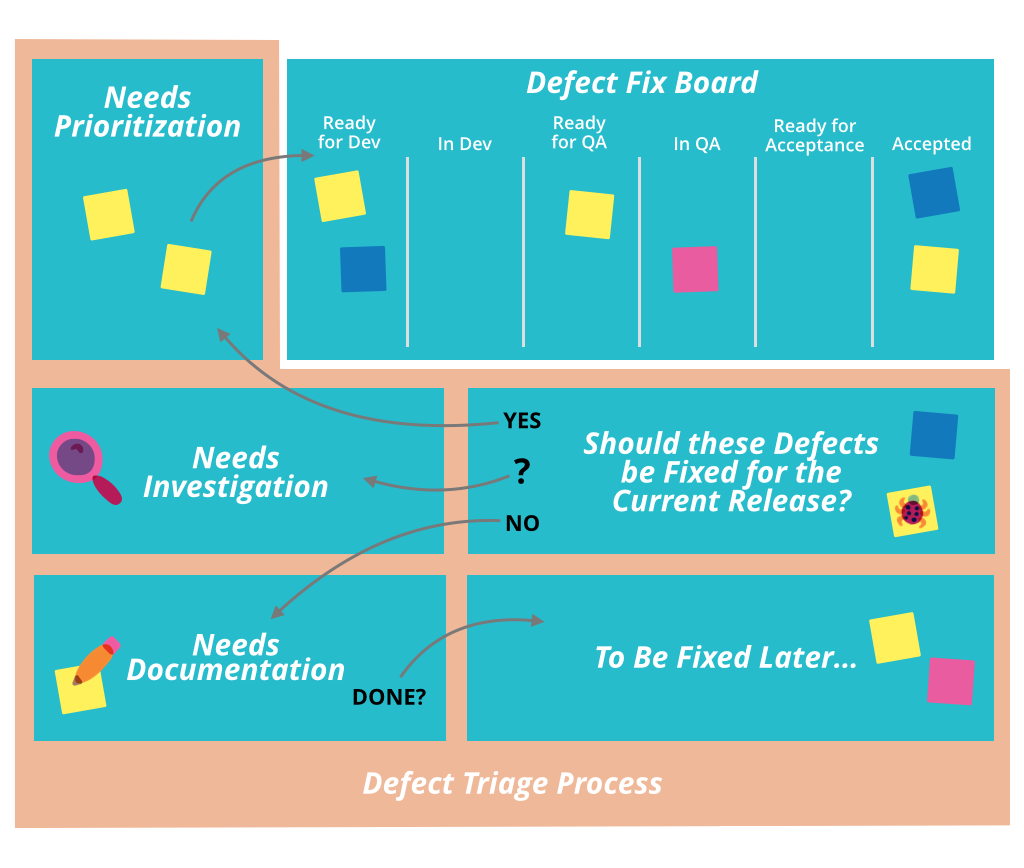
Transform Meetings With a Great Information Radiator
Do you remember that time at the end of a major release when you found yourself in a meeting room staring and delving into a long list of defects for hours? Did you groan when you were scheduled for a meeting that didn’t inspire much attendance, interest, or focus? How would you feel if you could transform that meeting into a lightweight, interactive activity built into the team’s development cycle?
We have accomplished this through an information radiator.
Information radiators are visual displays that provide insight and transparency of the current state, scenario or process as a snapshot. Agile methodologies incorporate “snapshots” in various forms, ranging from a card (or story) wall that shows the progress of a project, to the build radiators which indicates the state of the build. However, an information radiator by itself can only accomplish so much on its own. It is essentially just information displayed visually.
— Jez Humble and David Farley in Continuous Delivery
What makes an information radiator effective is when the information that is conveyed through the display, is important to the viewer and will inspire the viewer to take action. In addition, you should also provide a way for the team to interact with the board. It makes the display more interactive and inclusive as it not only provides insight, but also spurs conversation and motivates the act of sharing knowledge. It also requires management as part of the team’s process.
We endeavored to eliminate those periodic hour-long defect triage meetings staring at spreadsheets of defects and details but wanted to still keep the conversations needed to triage defects. A board was created that combines a flow chart of the triage decisions to be made and a defect wall to fix defects on an ongoing basis.
The action based prompts are found throughout the board, and guide the most important defects into a prioritized list which forms the "Ready for Development" queue of the defect wall, similar to that of a standard card wall. Remember those defect triage conversations that we still wanted to keep? They are scheduled as daily 15 minute meetings, conducted with the board and the stakeholders, where one can view the prioritized defects as they traverse their way through the flowchart and into the defect wall. However, we learned fairly quickly that these meetings weren’t needed, as stakeholders quickly adopted triaging new defects when they noticed them on the board as they passed by. The daily standups occurring at the defect wall gives insight on the progress of the fixes.
This can be done by making information radiators more than just 2D. We should do more than just look at them. Let’s add dimension to them — the dimension of people. Let’s build it with the idea that people should be and will be collaborating on it.
Some ideas for achieving this would be to make it visually fun by using colors, Post-Its, adding pictures or doodles, guiding the flow of the audience’s information with arrows, and employing inclusive and interactive language such as “Add me!” or “Are these needed?”. Even better, attach a Post-It note pad and a sharpie to your board to encourage people to add to the board.
Adding people to the mix makes these visual displays interactive, real, and effective. Creating a radiator that is also able to guide desired process and responses into the team behavior, would encourage the team to continue to use and update it, making it a useful artifact.
It’s important to remember that the information radiator wasn’t our goal, but it became our channel to identify immediate action needed in a visual display and to facilitate conversations intended in an already established meeting.
With our defect triage and fix board, we simplified the defect triage process which consequently, reduced the number of hour long meetings and changed them into daily fifteen-minute meetings that could be scheduled on an as-needed basis for stakeholders involved. The previously sequestered stakeholder triage meetings are now held at the board, and as a visual display, it opens up the meetings to anyone interested in attending and even invites passersby to view and ask questions.
The combination of both shorter meetings and the visual display helps to generate interest in attendance, attention and investment to the process and progress. Its transparency encourages team members to update, collaborate, and interact with it; thereby, motivating the team to take ownership and hold each other accountable for the progress and success of the project. In the end, this information radiator was able to not only tell us about the state of the project but it also, brought the team together with a given purpose and a vested interest in its growth.
What information radiators have you used to reduce meetings?
Disclaimer: The statements and opinions expressed in this article are those of the author(s) and do not necessarily reflect the positions of Thoughtworks.














